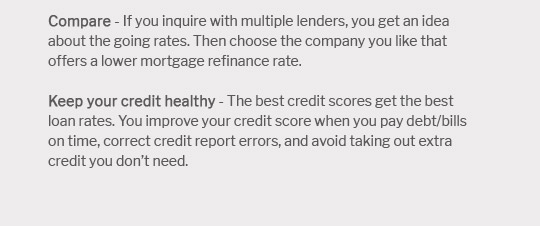 |
|||
 |
 |
 |
||
|---|---|---|
 |
||
 |
||
 |
||
 |
||
 |
||
 |
||
 |
 |
 |
 |
20 Yr Refinance: Key Insights and Common Mistakes to AvoidRefinancing your mortgage can be a smart financial move, especially when opting for a 20-year term. This option can help you save on interest while maintaining manageable monthly payments. However, it's crucial to understand the nuances and avoid common pitfalls. In this article, we will delve into the essentials of 20-year refinancing, tips for success, and frequently asked questions. Understanding 20-Year RefinanceBenefits of a 20-Year TermChoosing a 20-year refinance offers several benefits. It strikes a balance between the lower interest costs of shorter loans and the manageable payments of longer terms. This can result in substantial savings over time. Potential DrawbacksDespite the advantages, there are potential drawbacks. A 20-year refinance might not significantly reduce your monthly payments compared to a 30-year term. It's essential to assess whether the monthly savings align with your financial goals.
Steps to a Successful RefinanceEvaluate Your Current SituationBefore refinancing, analyze your current mortgage terms and interest rates. This evaluation will help you decide if refinancing is beneficial. Consider current house refinance rates to gauge potential savings. Shop Around for LendersDifferent lenders offer varied terms and rates. It's essential to shop around and compare offers to secure the best deal. Don't hesitate to negotiate terms that suit your needs. Avoiding Common Mistakes
Exploring Regional DifferencesRefinance rates can vary significantly by region. For instance, refinance rates in Utah may differ from those in other states. Understanding these differences can help you make an informed decision. FAQ SectionWhat are the key factors influencing 20-year refinance rates?Several factors influence these rates, including credit score, loan-to-value ratio, and prevailing economic conditions. Is it better to refinance to a 20-year mortgage if planning to sell soon?If you plan to sell in the near future, calculate the break-even point to determine if the refinance will provide financial benefits before selling. How does a 20-year refinance affect my long-term financial plans?A 20-year refinance can help reduce interest payments, enabling more savings or investment opportunities, but consider how the monthly payment fits into your overall budget. https://www.usbank.com/home-loans/refinance/conventional-fixed-rate-refinance/20-year-fixed-refinance-rates.html
The rates shown above are the current rates for the purchase of a single-family primary residence based on a 45-day lock period. https://www.bankrate.com/mortgages/20-year-refinance-rates/
Pros of a 20-year mortgage refinance - Paid off faster than a traditional 30-year mortgage: - Generally have a lower interest rate than longer-term loans: ... https://www.bankofamerica.com/mortgage/fixed-rate-refinance-loans/
Today's competitive rates for fixed-rate refinance loans ; 30-year fixed - 6.750% - 6.944% ; 20-year fixed - 6.625% - 6.851% ; 15-year fixed - 5.875% - 6.164%.
|
|---|